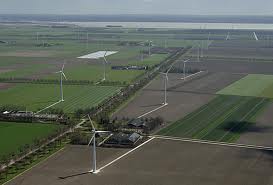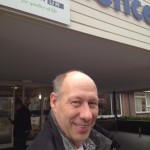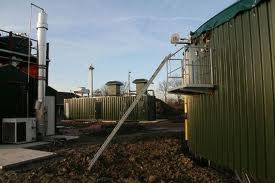
Herman Vermeer is a farmer in the Flevo polder. He grows stew (potatoes, onions, carrots), wheat, rutabaga and tulips on 70 hectares; and he is a partner in a wind collective, with his neighbours. Among them they own 10 MegaWatts, which can supply electricity to 6.000 households.
Entering the polder, one sees more wind turbines than anywhere in the Netherlands. They number 600 now, most of them owned by local farmers. Recently, electricity company NUON bought a park there, in order to fulfill its sustainability obligations. ‘And there is more to come,’ says Herman, who calls himself an energy farmer; but that does not mean more turbines. They will become bigger, though. Going from 600 turbines, 1MW each, to 300 turbines, 7 MW each.
A technical landscape
The remarkable thing about wind energy in the Flevo polder is that almost everyone appears to accept it, Herman says, contrary to many other places in the Netherlands and abroad. ‘That is because everyone can participate, as present turbines are being restructured. Inhabitants who do not own wind shares will profit from the turbines’ yield, too, through the levies administered by their communities.’ And as a matter of fact, turbines do not detonate in the polder, it is a technical landscape with turbines along road and dikes straight as an arrow. A landscape which will become much more technical yet because of solar panels, biodigesters, algae ponds with their equipment, and installations for reuse of agricultural waste and food and chemicals production.

Herman combines wind energy with solar panels, intended mainly, as he says, to ‘turn back the meter’. Some agricultural entrepreneurs have a manure digester of their own. ‘Fermentation is a very delicate process,’ he says, ‘as far as bacteria are concerned. It must be done in a certified way. If I would use the wrong kind of waste – municipal waste for example – I would end up with a dead tank for six weeks.’ Meaning full stop and a major loss.
New small scale employment
Herman is investigating an algae pond construction in which he could use the digester’s heat and CO2 production for algae growth. This would amount to building the biobased economy in practice. The best way to do this is in a farmer’s cooperative. They will bring new economic activity to rural areas, and create new, small scale employment and new local industries.

In fact, Herman Vermeer and his colleagues do in practice what ACRRES (Application Centre for Renewable RESources, a Wageningen University and Research and Eneco research centre) does in the field of science in Lelystad, a few miles away. They combine algae production (using a number of systems), pretreatment and biorefinery, and a 2 x 470 m3 anaerobic digester, using waste heat, digestate and CO2 for algae production. Making use of solar panels, wind turbines and a detailed tuning of heat streams, performing scientific research on the equipment, and producing ethanol, a variety of algae products, and upgrading biogas to natural gas quality (green gas). They not only develop technology, but help entrepreneurs to enter the market as well.
Research and commercial activities getting close
ACRRES cooperates with a number of SMEs, among which entrepreneur Arnout van Diem’s Algae Food & Fuel, which produces algae using LED light technology. Using this technology, Arnout can grow algae in deeper ponds, allowing for better productivity from flue gas CO2. It also means that algae grow at night as well, and that the company can harvest in winter. In this way ACRRES prepares for the advent of the biobased economy in rural areas. For that is how the BBE will look like in the region: small scale but high-tech activities. Research and commercial activities getting close. Exchanging much knowledge and experience.
